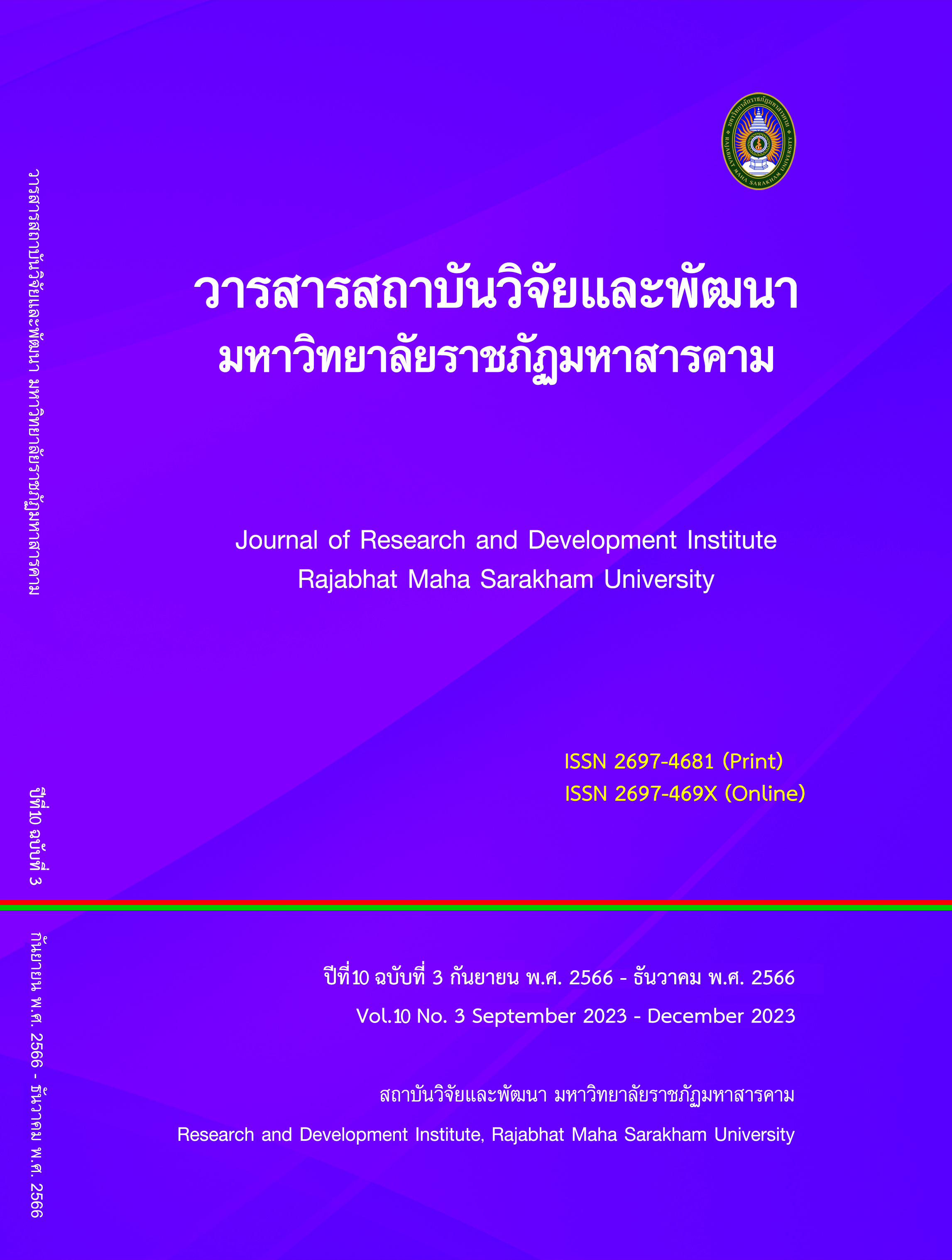The relationship between knowledge, attitude and basic life-support abilities of police cadets, Provincial Police Training Center Region 3
Keywords:
Basic Knowledge, Attitude, Ability to Basic Life SupportAbstract
Thisresearchisadescriptiveresearchof relationship analysis,aimedatfindingtherelationshipbetweenknowledge. Students'basiclife-savingabilities, attitudes, andabilities Police Officer, ProvincialPoliceTrainingCenterRegion3Bysimplesamplingmethod, samplesize330people, thetoolsusedtocollectdataconsistofgeneralcharacteristicsquestionnaire, basic resuscitation knowledgetest, basic cardiopulmonary supportattitude test, andbasicresuscitationabilityperceptiontest.AnalyzedatawithSpearmancorrelationcoefficientstatistics.
The results showed that most of the police cadets in the sample had moderate basic life-saving knowledge. Moderate attitude There is a small level of recognition of basic resuscitation abilities. Basic life support knowledge is positively correlated with statistically significant basic resuscitation attitudes. Basic knowledge of resuscitation is very negatively correlated with the perception of basic resuscitation capabilities. and a perception of basic life-saving capabilities. There was a very low negative correlation with statistically insignificant attitudes.
Based on the results of this research, the information should be used in the planning of teaching and learning in the curriculum. Royal Thai Police Cadets To promote basic resuscitation operations knowledge to police cadets upon successful completion of training to be able to care for injured people who are unconscious, cardiac arrest and do not breathe suddenly both during their duties and daily life.
References
Bandura A. (1997). Self-efficacy: The exercise of control. New York: Freeman and Company.
Berg, R. A., Hemphill, R., & Abella, B. S. (2010). Part 5: Adult basic life support: 2010 American Heart Association Guidelines for Cardiopulmonary Resuscitation and Emergency Cardiovascular Care. Circulation, 122, S685-S705.
Bloom BS. (1964). Taxonomy of educational objectives: The classification of educational goals: Handbook: Cognitive domain. New York: McKay.
Hamilton, R. W., & Rust, R. T. (2005). Feature fatigue: When product capabilities become too much of a good thing. Journal of Marketing Research, 42(4), 431–442.
Hou Y, Li Q, and Zhang W. (2021). Undergraduate nursing students’ knowledge, attitudes and self-efficacy regarding palliative care in China: A descriptive correlational study. Nursing Open.
Kanchanawasi, S. (2008). Traditional theory testing. (6thed.). Bangkok : Chulalongkorn University Press.
Na Pompetch, S., Niruttisat, S., and Wangthaweesap, K. (2012). Basic life support. in Kritsanarangsan, S., Niruttisat, S., Wangthaweesap, K., and Saelee, R. 131 Songklanagarind Journal of Nursing Vol. 35 No.1 January - April 2015 (2nd ed.), pages 17- 23. Bangkok: A-Plus Print.
Pengchaem, W. (2017). Basic life support knowledge of students in Mathayomsuksa 5 under the jurisdiction of the Secondary Educational Service Area Office 31, Nakhon Ratchasima Province. Association of Private Educational Institutions of Thailand Under the Royal Patronage of Her Royal Highness Princess Maha Chakri Sirindhorn, Year 6, Issue 2, July-December 2017, 63-71
Sharon, S. and Saul M. (1996). Social psychology. Boston: Houghton Mifflin.
Downloads
Published
How to Cite
Issue
Section
License
Copyright (c) 2023 นิสากร ฤทธิ์รักษา

This work is licensed under a Creative Commons Attribution-NonCommercial-NoDerivatives 4.0 International License.
Articles that are published are copyrighted by the authors of the articles






